-
 Bitcoin
Bitcoin $107,443.3008
-1.17% -
 Ethereum
Ethereum $2,494.2503
-0.63% -
 Tether USDt
Tether USDt $1.0003
0.00% -
 XRP
XRP $2.2496
2.23% -
 BNB
BNB $658.7569
0.63% -
 Solana
Solana $154.9826
1.94% -
 USDC
USDC $1.0000
0.01% -
 TRON
TRON $0.2799
1.07% -
 Dogecoin
Dogecoin $0.1659
-1.78% -
 Cardano
Cardano $0.5745
0.25% -
 Hyperliquid
Hyperliquid $39.7005
0.13% -
 Bitcoin Cash
Bitcoin Cash $519.5989
3.78% -
 Sui
Sui $2.7874
-2.40% -
 Chainlink
Chainlink $13.3762
-1.69% -
 UNUS SED LEO
UNUS SED LEO $9.0784
-0.64% -
 Avalanche
Avalanche $17.9846
-2.81% -
 Stellar
Stellar $0.2390
-0.06% -
 Toncoin
Toncoin $2.9028
0.25% -
 Shiba Inu
Shiba Inu $0.0...01147
-2.17% -
 Litecoin
Litecoin $86.6956
-1.27% -
 Hedera
Hedera $0.1508
-0.50% -
 Monero
Monero $322.6222
3.26% -
 Polkadot
Polkadot $3.4124
-2.99% -
 Dai
Dai $0.9999
0.00% -
 Bitget Token
Bitget Token $4.5434
-1.97% -
 Ethena USDe
Ethena USDe $1.0002
0.00% -
 Uniswap
Uniswap $7.1562
-2.61% -
 Aave
Aave $275.8830
-1.02% -
 Pepe
Pepe $0.0...09790
-4.04% -
 Pi
Pi $0.5018
-5.09%
Does LTC mining need to run 24 hours a day? Is intermittent mining feasible?
LTC mining can be done 24/7 for max rewards, but intermittent mining can save costs and reduce equipment wear, though it may lower earnings.
May 05, 2025 at 01:07 am
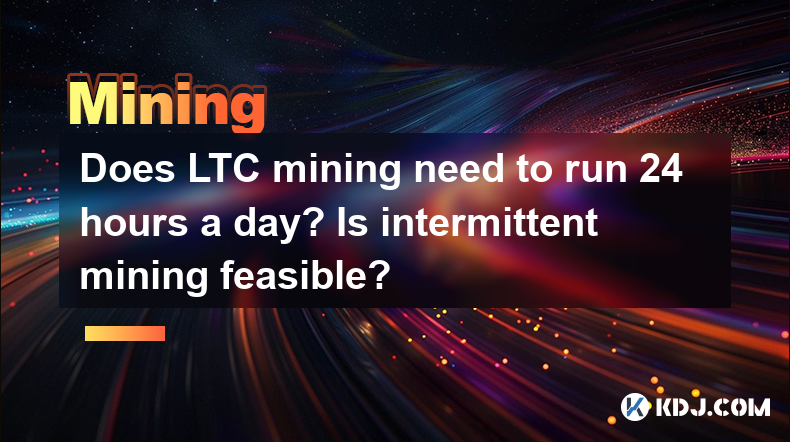
Does LTC mining need to run 24 hours a day? Is intermittent mining feasible?
When it comes to Litecoin (LTC) mining, one of the most common questions among miners is whether it's necessary to run their mining operations 24 hours a day, or if intermittent mining is a viable option. Understanding the nuances of continuous versus intermittent mining can help miners make informed decisions about their operations. Let's delve into the specifics of LTC mining and explore these two approaches.
Understanding LTC Mining Basics
Litecoin mining involves using specialized hardware to solve complex mathematical problems, which in turn validates transactions on the Litecoin blockchain and rewards miners with newly minted LTC. The process requires significant computational power and electricity, making it crucial for miners to consider their operational strategies carefully.
The Case for 24/7 Mining
Running LTC mining operations 24 hours a day can be beneficial for several reasons. First and foremost, continuous mining allows miners to maximize their chances of solving the next block and earning the associated rewards. Since the Litecoin network operates around the clock, miners who run their equipment non-stop are more likely to stay competitive and increase their earnings over time.
Additionally, 24/7 mining can help miners maintain a consistent hash rate, which is crucial for maintaining the stability of the Litecoin network. A stable hash rate contributes to the overall health of the blockchain, making it more resistant to attacks and ensuring that transactions are processed smoothly.
Challenges of 24/7 Mining
Despite the advantages, running mining operations continuously comes with its own set of challenges. The most significant of these is the high cost of electricity. Mining hardware consumes a lot of power, and running it 24/7 can lead to substantial electricity bills that can eat into miners' profits.
Another challenge is the wear and tear on mining equipment. Continuous operation can lead to increased maintenance costs and a shorter lifespan for the hardware. Miners need to weigh these costs against the potential rewards to determine if 24/7 mining is economically viable for them.
The Concept of Intermittent Mining
Intermittent mining, on the other hand, involves running mining operations for only certain periods of the day or week. This approach can help miners manage their electricity costs and reduce the strain on their equipment. However, it also comes with its own set of considerations.
Advantages of Intermittent Mining
One of the primary advantages of intermittent mining is the potential for significant cost savings. By running their equipment only during off-peak hours or when electricity rates are lower, miners can reduce their operational costs. This can be particularly beneficial for miners who are operating on a tight budget or in regions with high electricity costs.
Another advantage is the reduced wear and tear on mining equipment. By giving their hardware periodic breaks, miners can extend the lifespan of their equipment and reduce maintenance costs. This can lead to long-term savings and a more sustainable mining operation.
Challenges of Intermittent Mining
Despite the potential benefits, intermittent mining also has its drawbacks. The most significant of these is the reduced chance of earning mining rewards. Since miners are not running their equipment 24/7, they are less likely to solve the next block and earn the associated LTC. This can lead to lower overall earnings and a less competitive position in the mining landscape.
Additionally, intermittent mining can contribute to a less stable hash rate on the Litecoin network. If a significant number of miners are turning their equipment on and off at different times, it can lead to fluctuations in the network's hash rate, which can impact the overall stability and security of the blockchain.
Strategies for Intermittent Mining
For miners who are considering intermittent mining, there are several strategies they can employ to maximize their chances of success. Here are some steps they can take:
- Monitor electricity rates: By keeping an eye on electricity rates and running their equipment during off-peak hours, miners can minimize their operational costs.
- Use scheduling software: There are various software solutions available that can help miners automate their mining schedules and ensure that their equipment is running at optimal times.
- Join a mining pool: By joining a mining pool, miners can pool their resources with other miners and increase their chances of earning rewards, even if they are not mining 24/7.
- Regularly maintain equipment: Even with intermittent mining, it's important for miners to regularly maintain their equipment to ensure it remains in good working condition and can perform efficiently when it is running.
Conclusion on LTC Mining Strategies
In conclusion, both 24/7 mining and intermittent mining have their own set of advantages and challenges. Miners need to carefully consider their operational costs, equipment maintenance, and potential earnings when deciding which approach to take. By understanding the nuances of each strategy, miners can make informed decisions that align with their goals and resources.
Frequently Asked Questions
Q: Can I switch between 24/7 mining and intermittent mining based on market conditions?
A: Yes, miners can switch between 24/7 mining and intermittent mining based on market conditions. For example, if the price of Litecoin is high and electricity costs are low, it might be more profitable to run mining operations 24/7. Conversely, if the price of Litecoin drops or electricity costs rise, miners might opt for intermittent mining to manage their costs.
Q: How does the difficulty adjustment in Litecoin affect the choice between 24/7 and intermittent mining?
A: The difficulty adjustment in Litecoin, which occurs every 2016 blocks, can impact the choice between 24/7 and intermittent mining. When the difficulty increases, it becomes harder to solve blocks, which might make 24/7 mining more appealing to increase the chances of earning rewards. Conversely, if the difficulty decreases, miners might find that intermittent mining is sufficient to maintain their earnings.
Q: Are there any specific types of mining hardware that are better suited for intermittent mining?
A: While most mining hardware can be used for intermittent mining, some types are better suited for this approach. For example, ASIC miners designed for Litecoin mining can be more efficient and consume less power when turned off and on periodically. Miners should consider the power consumption and startup times of their hardware when deciding on an intermittent mining strategy.
Q: How can I calculate the break-even point for my LTC mining operation?
A: To calculate the break-even point for your LTC mining operation, you need to consider several factors, including the cost of electricity, the efficiency of your mining hardware, and the current price of Litecoin. Here's a basic formula to help you calculate the break-even point:
- Total Cost of Mining = (Electricity Cost per kWh x Power Consumption of Hardware in kW x Hours of Operation) + Hardware Cost
- Revenue from Mining = (Number of LTC Mined x Current Price of LTC)
- Break-even Point = Total Cost of Mining / Revenue from Mining
By plugging in the relevant numbers, you can determine how long it will take to break even on your mining operation.
Disclaimer:info@kdj.com
The information provided is not trading advice. kdj.com does not assume any responsibility for any investments made based on the information provided in this article. Cryptocurrencies are highly volatile and it is highly recommended that you invest with caution after thorough research!
If you believe that the content used on this website infringes your copyright, please contact us immediately (info@kdj.com) and we will delete it promptly.
- Donald Trump, TRUMP Memecoin, and the Latest Move: A New York Perspective
- 2025-07-01 17:10:12
- Cardano, Solana, XRP: Navigating the Crypto Seas in Q3 2025
- 2025-07-01 16:30:12
- Bitcoin Holders and the Price Hold: What's the Deal?
- 2025-07-01 16:50:26
- ChatGPT, Crypto Trading, and a $100K Profit: AI's Edge in the Wild West
- 2025-07-01 16:30:12
- Mutuum Finance Presale vs. Dogecoin: A New Challenger Approaches?
- 2025-07-01 16:50:26
- Memecoins to Buy in July 2025: Riding the Hype Wave
- 2025-07-01 17:10:12
Related knowledge
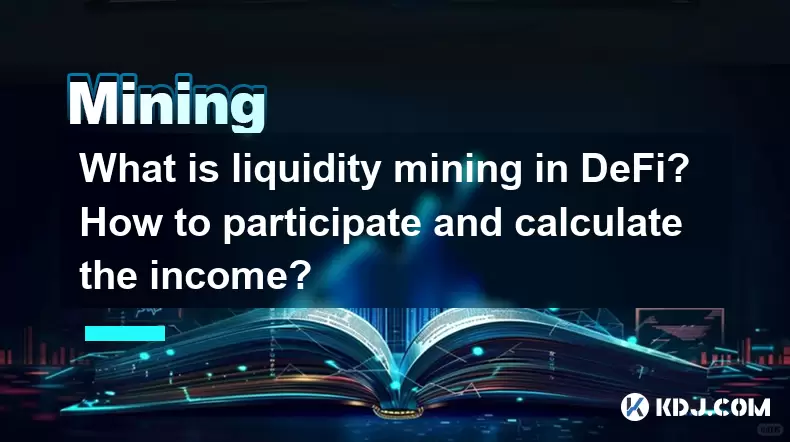
What is liquidity mining in DeFi? How to participate and calculate the income?
Jun 20,2025 at 03:21pm
Understanding Liquidity Mining in DeFiLiquidity mining is a core concept in the decentralized finance (DeFi) ecosystem that allows users to earn rewards by providing liquidity to decentralized exchanges (DEXs) or lending platforms. In traditional finance, liquidity providers are usually institutional players, but DeFi democratizes this process, enabling...
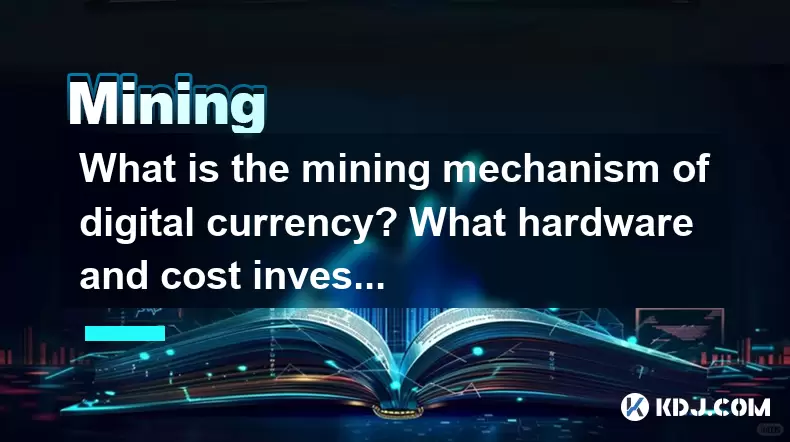
What is the mining mechanism of digital currency? What hardware and cost investment are required?
Jun 23,2025 at 06:29am
Understanding the Mining Mechanism of Digital CurrencyThe mining mechanism of digital currency is a foundational process that ensures transaction validation and network security. In most Proof-of-Work (PoW) cryptocurrencies like Bitcoin, miners compete to solve complex mathematical puzzles using computational power. The first miner to find a valid solut...
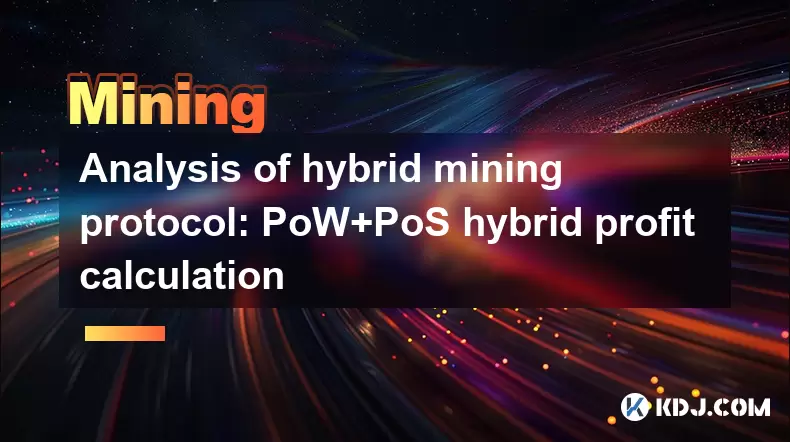
Analysis of hybrid mining protocol: PoW+PoS hybrid profit calculation
Jun 23,2025 at 10:15am
Understanding Hybrid Mining ProtocolsIn the realm of blockchain technology, consensus mechanisms are pivotal in maintaining network integrity and transaction validation. A hybrid mining protocol combines two or more consensus algorithms to achieve a balance between security, decentralization, and energy efficiency. The most commonly adopted hybrid model...
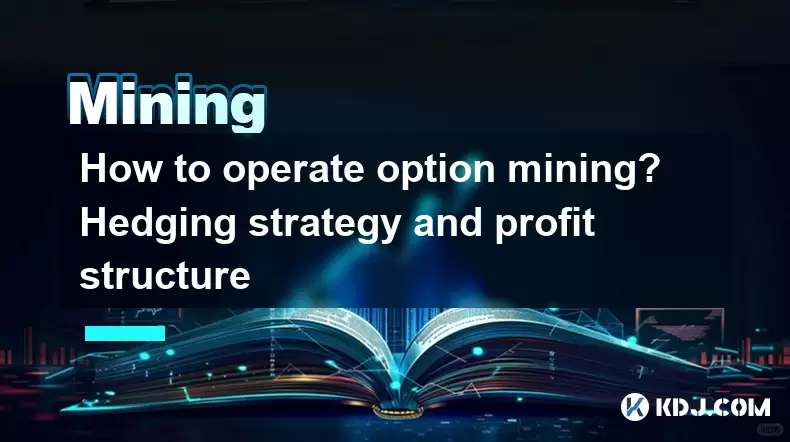
How to operate option mining? Hedging strategy and profit structure
Jun 21,2025 at 03:29pm
What is Option Mining?Option mining refers to a decentralized finance (DeFi) strategy where participants provide liquidity or take specific derivative positions in options protocols to earn rewards. Unlike traditional yield farming, option mining often involves liquidity provision for options markets, allowing users to generate returns through premiums ...
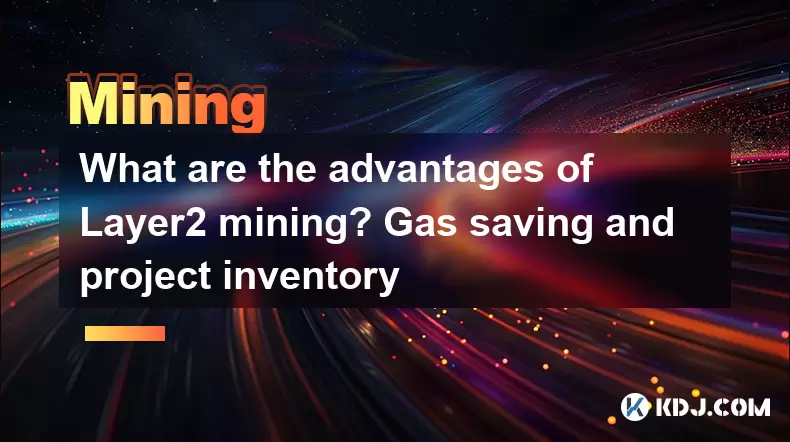
What are the advantages of Layer2 mining? Gas saving and project inventory
Jun 20,2025 at 04:50am
Understanding Layer2 Mining and Its SignificanceLayer2 mining refers to the process of participating in decentralized applications or protocols that operate on top of a primary blockchain (such as Ethereum) using scaling solutions like Optimism, Arbitrum, or zkSync. Unlike traditional mining on Layer1 blockchains, which often involves high computational...

Is contract mining safe? Key points of smart auditing and vulnerability prevention
Jun 19,2025 at 08:08pm
Understanding Contract Mining in the Cryptocurrency SpaceContract mining refers to a method within blockchain ecosystems where users can participate in mining operations through smart contracts. Unlike traditional mining, which requires physical hardware and technical expertise, contract mining allows participants to invest funds into a mining pool or p...

What is liquidity mining in DeFi? How to participate and calculate the income?
Jun 20,2025 at 03:21pm
Understanding Liquidity Mining in DeFiLiquidity mining is a core concept in the decentralized finance (DeFi) ecosystem that allows users to earn rewards by providing liquidity to decentralized exchanges (DEXs) or lending platforms. In traditional finance, liquidity providers are usually institutional players, but DeFi democratizes this process, enabling...

What is the mining mechanism of digital currency? What hardware and cost investment are required?
Jun 23,2025 at 06:29am
Understanding the Mining Mechanism of Digital CurrencyThe mining mechanism of digital currency is a foundational process that ensures transaction validation and network security. In most Proof-of-Work (PoW) cryptocurrencies like Bitcoin, miners compete to solve complex mathematical puzzles using computational power. The first miner to find a valid solut...

Analysis of hybrid mining protocol: PoW+PoS hybrid profit calculation
Jun 23,2025 at 10:15am
Understanding Hybrid Mining ProtocolsIn the realm of blockchain technology, consensus mechanisms are pivotal in maintaining network integrity and transaction validation. A hybrid mining protocol combines two or more consensus algorithms to achieve a balance between security, decentralization, and energy efficiency. The most commonly adopted hybrid model...

How to operate option mining? Hedging strategy and profit structure
Jun 21,2025 at 03:29pm
What is Option Mining?Option mining refers to a decentralized finance (DeFi) strategy where participants provide liquidity or take specific derivative positions in options protocols to earn rewards. Unlike traditional yield farming, option mining often involves liquidity provision for options markets, allowing users to generate returns through premiums ...

What are the advantages of Layer2 mining? Gas saving and project inventory
Jun 20,2025 at 04:50am
Understanding Layer2 Mining and Its SignificanceLayer2 mining refers to the process of participating in decentralized applications or protocols that operate on top of a primary blockchain (such as Ethereum) using scaling solutions like Optimism, Arbitrum, or zkSync. Unlike traditional mining on Layer1 blockchains, which often involves high computational...

Is contract mining safe? Key points of smart auditing and vulnerability prevention
Jun 19,2025 at 08:08pm
Understanding Contract Mining in the Cryptocurrency SpaceContract mining refers to a method within blockchain ecosystems where users can participate in mining operations through smart contracts. Unlike traditional mining, which requires physical hardware and technical expertise, contract mining allows participants to invest funds into a mining pool or p...
See all articles

























































































